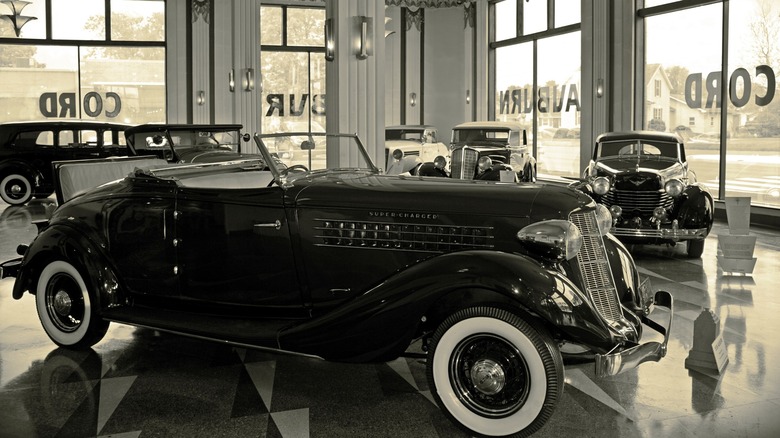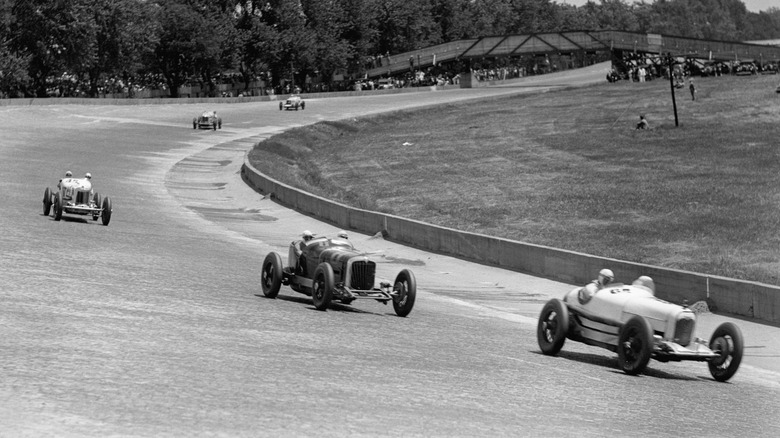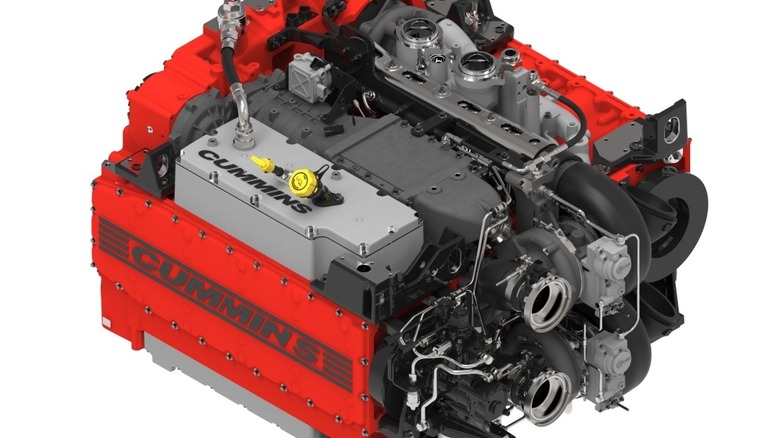Yes, Cummins Did Make A 2-Stroke Diesel Engine (And It's Linked To The Indy 500)
The best Cummins diesel engines are the result of decades of innovation, which all began with founder Clessie Cummins. They also have a history of racing at the Indianapolis 500. In 1934, Cummins entered two cars into the 500-mile race held at the Brickyard, otherwise known as the Indianapolis Motor Speedway – one powered by a four-stroke diesel engine, which would become the company norm, and the other powered by a two-stroke.
Clessie Cummins exhibited a high level of mechanical aptitude from an early age. Through contacts made working as a mechanic for Marmon Motor Company, Cummins served on the pit-crew for Ray Harroun's Marmon Wasp, which took first place in the first-ever Indy 500 in 1911. After a few years building gasoline engines for local farmers, Cummins witnessed the demonstration of a new Dutch engine design that ran on diesel fuel. In 1919, Cummins received a license to build these new diesel engines in America, and he founded the Cummins Engine Company in Columbus, Indiana, less than 50 miles from Indianapolis.
Cummins diesel engines at the Indy 500
In 1931, Cummins put a version of its Model U diesel engine into a Model A Duesenberg and finished in 13th place at the Indy 500. The company returned to the Indy 500 in 1934 with two 135-horsepower supercharged diesel-engine race cars, one a four-stroke and the other a two-stroke. The two-stroke required 37 horsepower to drive the supercharger compared to the four-stroke's 7-horsepower requirement.
The two-stroke engine overheated, melting the pistons and fusing them to the cylinder liners, but finished the race in a cloud of smoke in 12th place. The failure prompted Cummins to abandon the two-stroke and focus entirely on four-stroke diesel engine development, at least for the next several decades. The four-stroke car finished in 19th place.
1952 was Cummins' last diesel showing at Indy due to a rule change made afterward, with the company qualifying in the pole position. The car eventually finished in 27th place after running as high as 5th.
The future of two-stroke diesel engines
Cummins largely abandoned the two-stroke diesel engine following its smokey finish at the 1934 Indy 500, and competitor Detroit Diesel stopped two-stroke diesel engine production in 1998. The two-stroke has mostly faded into obscurity. However, Cummins is developing a new two-stroke diesel engine with a unique compression method intended for military applications.
A news release from Cummins, Inc. from July 2021 announced that the United States Army had awarded the company an $87M contract to "complete the development of the Advanced Combat Engine (ACE)." While the two-stroke Advanced Combat Engines are primarily intended for use in Next Generation Combat Vehicles, there's potential for future commercial applications as well. The scalable design allows for three, four, and six-cylinder layouts, with Cummins claiming that the ACE provides 50% more power density, 20% less heat rejection, and 13% better fuel efficiency than previous combat engines. Depending on the configuration, the company claims 750 to 1,500 horsepower. This enhanced performance is due in part to the ACE's opposed-piston design, with two pistons per cylinder firing into each other.
While the two-stroke engine may be a thing of the past in many aspects, the Cummins ACE could be the boost it needs to survive. It'll be exciting to see what the future holds for the two-stroke diesel engine.


